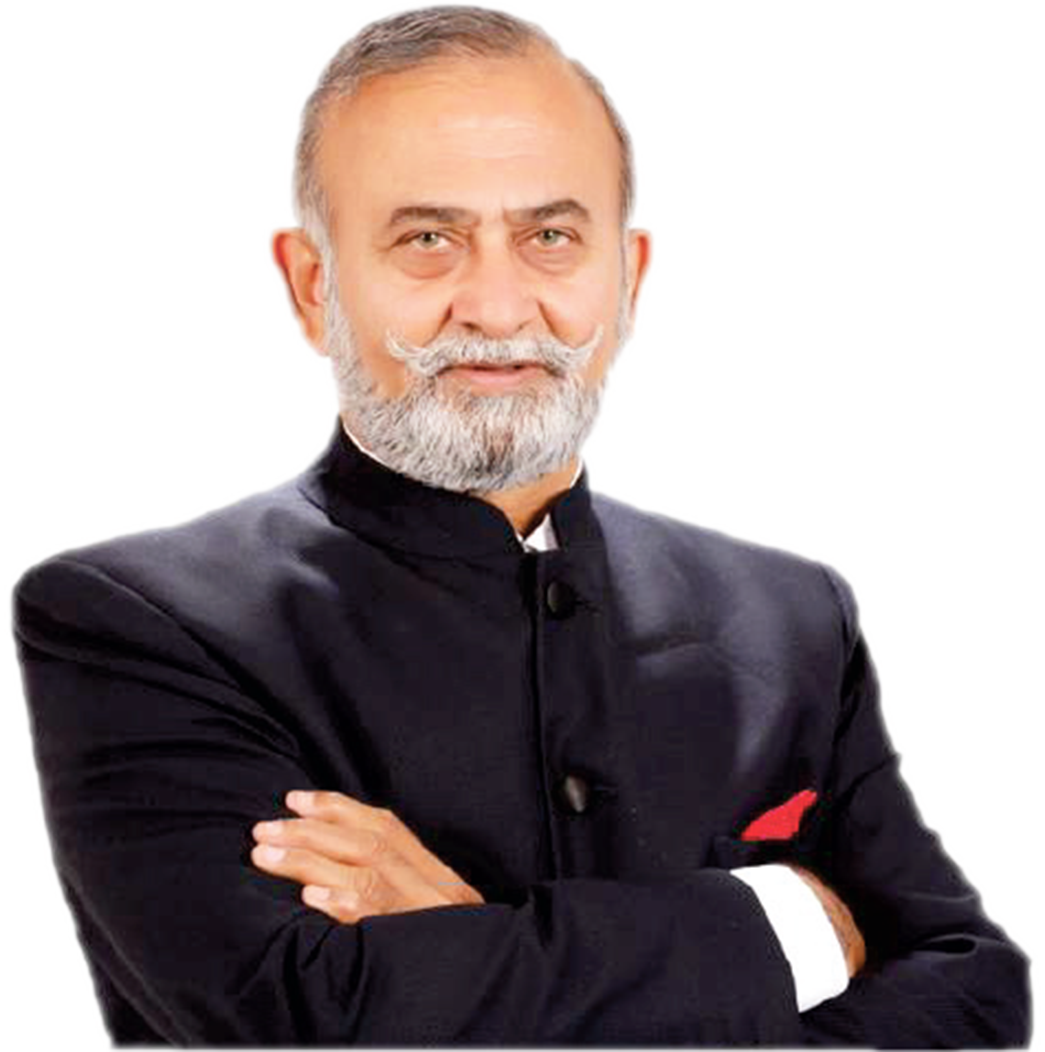
Anil Puri
CMD, APS group
A first generation serial entrepreneur, thought leader and an action catalyzer rolled into one – Anil Puri is a rare combination of a visionary, an innovator and a strategic thinker. He has used this combination to innovate and implement on-ground many new business ideas. His rich experience in various businesses has enabled him to nurture & mentor innovative ideas and scale them up.
INTRODUCTION
Safety and security lie at the heart of the prosperity of any nation. Citizens want to feel safe (protected from risk or injury) and secure (free from danger or threat). States have a primary duty of protecting the security of their citizens and all persons within their jurisdiction, maintaining and promoting crime prevention and community safety. Today, security is being challenged in many dimensions including physical, digital and economic. Accepted social norms of behavior are also being challenged. Added to this is deteriorating trust in public institutions and in leaders who should be a primary source of safety for citizens and businesses. Governance is becoming increasingly difficult and national and international unity is becoming harder to achieve. As a result, even in stable countries, a large cross section of citizens feel or perceive to be unsafe. As the graph of insecurity rises, more and more people are turning to the private security to ensure their personal safety and that of their families and properties. This demand is seen to rise due to a state’s inability to provide adequate security to its people. Consequently, private security agencies working for governments, local communities and the corporate sector have been identified to play an important complementary role in preventing crime and enhancing community safety.
In this new reality, security, broadly defined, needs to be front and centre of government agenda – nationally, regionally and locally at the municipal level, as well as internationally – to deliver solutions that make the world a more secure place, so people trust institutions and the services they provide and so they both feel and are safe. Given that the threats come from many areas, this will require a much higher level of collaboration than we see today, both within government departments and among governments. Traditional security services such as the police, intelligence agencies and defence organizations will need to work with non-government organizations, businesses and citizens. With so many factors influencing perceptions of security, this type of collaboration needs across length & breadth of vision that is too often lacking and a level of organizational expertise that challenges current ways of working. In this new realm, national, regional and local governments need to view citizen safety (and security) in a holistic perspective and work across borders to achieve it.
CONCEPT OF SAFE SOCIETY
Societal Safety may be defined as ‘the society’s ability to maintain critical social functions, to protect the life and health of the citizens and to meet the citizens’ basic requirements in a variety of stress situations.’ The notion of security applies to anything we would want to make ‘secure’ from a perceived risk or threat. This includes digital and data security, national security, border security, food security, water security and social security, to name a few. All these are interconnected. In broader terms, therefore, security can be defined as the ‘alleviation of threats to cherished values.’ At a basic level, a society is nothing but a collection of people of different community. Individually each one is unsafe. But once networked, suddenly the concept of safety starts acquiring collective overtones. The concept of community is intrinsically linked with the intelligent design and architecting of urban spaces. It’s only through the integration of public and open spaces with the spaces of work, living and recreation that a vibrant community can be developed. An empowered community is a natural buffer and allows for proactive action to create an enabling environment for all sections of a society to lead their daily lives without fear and violence.
The holy grail of a safe society assumes reality only when the quality of life naturally and automatically lends itself to creating an environment of empowerment, enablement and safety.
ROLE OF THE POLICE
The role of police in India is – The maintenance of Law and Order and the prevention & detection of crime. Currently, the police service is understaffed, under paid, over worked and dogged by accusations of corruption and inefficiency. Recently, it is characterized by increasing incidents of criminal activities, collusion between the police and the criminals in acts of lawlessness and a growing mistrust from the members of the public. It is observed that this disconnect between the police and the community members is best demonstrated by the phenomenon of rising number of private security companies and the demand of security by individuals, companies and institutions on the PSI.
ROLE OF PSI
The private security is driven by the profit motive. Their main service product is the protection of their clients’ interests at a profit while the police aim at protecting the public and their property as an obligation and public good. In general, the role of the private security providers is seen as providing security while maximizing on profits. The private security in India adopted the methodology of detect, deter, delay, and report. The security personnel don’t need to make arrest, but have the authority to make a citizen’s arrest, by requesting a police officer. The main duty of security guards is to enforce company rules and act to protect lives and property for which they are given training as mandated by the PSARA 2005. The main role and responsibilities of private security are:
- Protect people and the property of his contracted clients;
- Prevention of an incident/ offense before it has occurred; and
- Observe and report during or after an incident/ offense. The services provided by the private security personnel in an industry can be broadly segmented into the following:
- Manned guarding,
- Cash services,
- Electronic security services, and
- Armed escort services.
ROLE OF PSI IN COMMUNITY POLICING
Community policing is defined as the partnership between the police and the community in addressing issues of security and social disorder in an area. The police view the private security as part of the community despite the crucial role they play in security of the areas that they are deployed. In view of the fact that success in community policing relies on success in partnerships building, there is a need for the police to establish partnerships with the private security providers and further to establish which roles private security providers can play in community policing. Given that the private security is a vital component of security and safety, their role needs to be adequately defined with regard to community policing and crime prevention and areas for collaboration effectively identified. This is because private security is found in more places than police officers and therefore have a greater access to criminal information and so their contribution to security is immense. However, the role they play in the context of community policing is not yet clear.
PSI is globally recognized as vital partners in preventing and detecting crime. Increased pressures upon the law enforcement community have resulted in many places around the world in the privatization of some police functions, with the civilian private security industry filling the gaps left by the overstretched police and playing a growing role in crime prevention and community safety. The extent to which the private security industry has a role in proactive policing is an issue. At present the private security industry performs reactive functions in relation to crime; these may include armed response, transporting cash and conducting investigations. Proactive policing, however, should be more concerned with conducting crime analyses, working together with the community to understand crime concerns, and strategizing to address safety and security related issues. Proactive policing should be concerned with specific targeting of criminal and disorderly behavior. In addition to guarding, security companies also provide armed response or alarm response, by monitoring alarms and dispatching security personnel (QRT) when the alarm is triggered. Although the guarding industry employs the bulk of security personnel, more clients are serviced through the armed response component of the security industry. The private security is regarded as an instrument of crime prevention whereby they are involved in efforts aimed at preventing, limiting or controlling the level of crime and disorder in society. This is due to the fact that the private security continuously undertakes tasks akin to that of conventional policing. The private security is seen to meet the needs of the clients willing to pay for their services and they operate in settings which the state has never had nor claimed effective monopoly of. As such the ultimate goal of the private security is not prosecution, conviction or punishment but rather protecting property and reducing risks.
In Indian context, the Law enforcement and private security share a number of common goals including crime prevention, the protection of people and property, and identification of criminals. The growing use of these partnerships reflects some recognized advantages. The deployment of security guards for traffic control, safeguard metro rails, escort buses, secure hospitals, govt buildings, factories, shopping malls and schools to offset the skewed police-public ratio. It often makes more sense for law enforcement to leverage the expertise and resources of a private security firm. Specialized security investigation sections can team with law enforcement to better investigate and prosecute complex cases. And private firms aren’t restricted by a public budget and can invest in the latest technology. Additionally, law enforcement officers often moonlight with security companies or transition into careers in private security, and have an understanding of the system and how they can work with law enforcement to better serve their community.
CONCLUSION
The new landscape of blended roles, law enforcement agencies teaming up with private security companies to form public-private partnerships to serve the public may be new to Indian subcontinent but it has been experimented successfully by quite a few nations like the United Kingdom, the Nether lands, Australia, Nigeria and South Africa. Despite the fact that police and private security operate on quite different principles of private and public interests, there does seem to be scope for enhanced relationships that provide wide benefits to diverse stakeholders provided a well-defined set of guiding principles are in place for ensuring accountability and optimal outcomes in crime prevention partnerships. These partnerships may cover a range of specialties including cyber security, financial criminal investigation and private protection. The need of the hour is to ensure restructuring, co-ordination, operational and partnership mechanisms for an effective collaboration, in compliance with the public safety policing concepts of the operation co-operation in regards to civility, transparency and cordial relativity between security stakeholders. In the concept of the safe society, the approach to security needs to be purposefully broad and inclusive with collaboration deeply embedded across four interrelated domains – physical, digital, economic and social. The private security industry certainly assumes a role of key component in the matrix of the convergence; hence a catalyzer.
In the quest for building a safer society, the Governments, their agencies and other stakeholders need to be constantly vigilant to the risks that endanger the safety of their citizens. This means assessing the threat levels across the four intersecting domains of physical, digital, economic and social security. Against this backdrop, I advocate a collaborative approach that focuses on where the key elements of security overlap and places a particular emphasis on trust. A collaborative, cross-sector approach that encourages distributive leadership may be the part of the solution. The interconnectivity of the domains adds to the complexity of delivering safety and security to the citizens and hence the need to think holistically across all domains.
